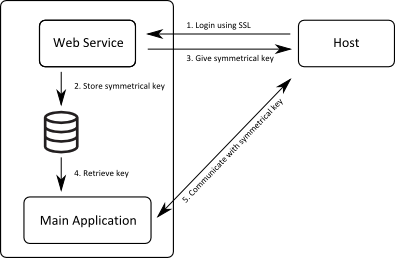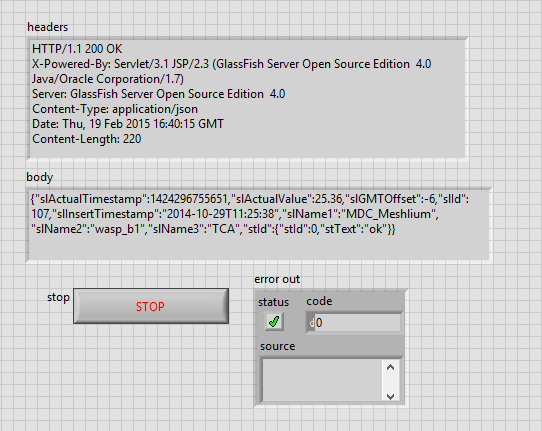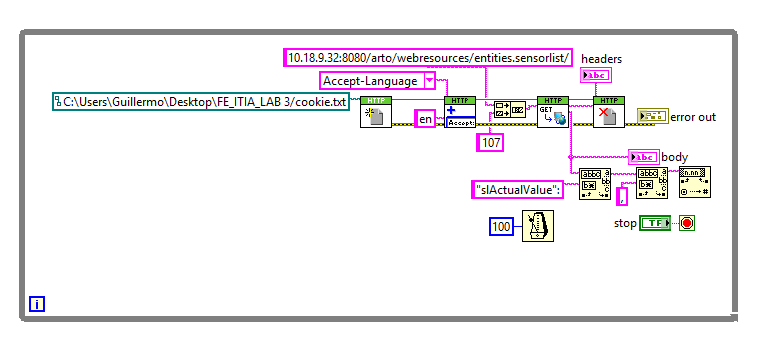Search the Community
Showing results for tags 'web services'.
-
Hi All, Can anybody shed some light on some strange behaviour I am seeing when deploying an executable with Web Services and Public Content. I have an HTML page that gets served up as part of my application. My LabVIEW application interacts with a browser via Web Services. Everything runs (mostly) fine, I can browse to localhost/ws/index.html and I get my web page. However, I would have expected that HTML (and JavaScript etc) would remain on disk in source form so I could edit it after the LabVIEW application has been built, but this does not appear to be the case. Changes I make to the source do not get reflected until I rebuild my LabVIEW application. Does the Public Content in the Web Service get packaged into either the .exe or the .lvws up as part of the build process? I am really perplexed by this. I have tried all the obvious things like clearing browser caches etc. I even tried using a brand spanking new browser that had never been installed on my PC and I got the same symptoms.
-
ShaunR's recent topic on Security reminded me of a situation we explored in the summer and need to revisit at some point. We were looking for a method to protect the communication with a cRIO. The situation is that we need to communicate between a cRIO and a host on an unsecured network (manufacturing environment.) We concluded that we needed some form of encryption as well as a standard login mechanism but identified that having a single symmetrical key would not provide enough protection (for various reasons and specific use cases.) Therefore, we looked into SSL and LabVIEW Web Services because it already includes that library and all the security features that we need. We figured out that it would definitely offer the protection required but that would mean rewriting most of existing code to use Web Service instead or establish some for of communication through a new Web Service. Considering the amount of unknown and risks associated with modifying our code, we looked into an alternative and came up with the following scheme: In short, we would use a Web Service for the initial login and create a new symmetrical key which would be passed to the host and to the main application on the target (cRIO) and would be used to encrypt/decrypt all data during the session. This way, we could still program all of our code in LabVIEW and easily download/deploy the services and applications to the Target using NI standard tools but benefit from proper security and only have to add fairly simple wrappers to some sections of our existing code. I wonder if anyone else has already gone down that route to add protection to an existing application. Would you suggest a different implementation method or an easier path to a similar result? Is there some obvious pitfalls in this approach that we do not see?
- 2 replies
-
- 1
-

-
- encryption
- web services
-
(and 2 more)
Tagged with:
-
Hello I have a problem with http VI’s and external web services (RESTful) and I’m using LabVIEW 2013. In NetBeans I create a project with a GET web service from a table in MySQL, so I use http VI’s for accessing the service (blog diagram .png), receiving the information in JSON (front panel.png) and took the information I needed (in this case the “slActualValue†value). I have a program that inserts new values in the database and in chrome the service works fine but if a want to do the Vi in a while loop to update or receive new values, the the next JSON data form the web service is the same as the first call, but if I go to the NetBeans project and do the deploy again the JSON data changes. I ask about this problem from the experts in web services (RESTful) and they say that is the cookies in the LabVIEW program, so I create add a cookie file .txt but im not confident about the format of the file(the example is in this post) or if there something amiss in the LabVIEW VI’s Cookie.txt file # Netscape HTTP Cookie File # http://curl.haxx.se/rfc/cookie_spec.html # This file was generated by libcurl! Edit at your own risk. UNKNOWN FALSE 10.18.9.32:8080/arto FALSE 0 ID 0
-
Hi guys, just wondering if it is possible to publish a web service with a control and simulation loop in the vi. I have a simulation loop and an output of an array and matrix of data from a signal, yet i can't seem to be able to deploy the vi at all. It will build but not deploy. Any help or advice would be most appreciated. Thanks
-

Easy Monitoring from Tablets
JamesMc86 posted a topic in Remote Control, Monitoring and the Internet
Hi All, Here in the UK we have just completed our annual NIDays conference where we were lucky enough to get the first public preview of something R&D have been working on. There is an app for iPad and Android tablets to allow you to monitor shared variables and web services on a configurable graphical display. This is currently in internal beta but you can see the preview by going to the National Instruments channel on IET.tv and looking for the future technologies in LabVIEW video.- 1 reply
-
- 1
-

-
- web services
- shared variables
-
(and 3 more)
Tagged with:





